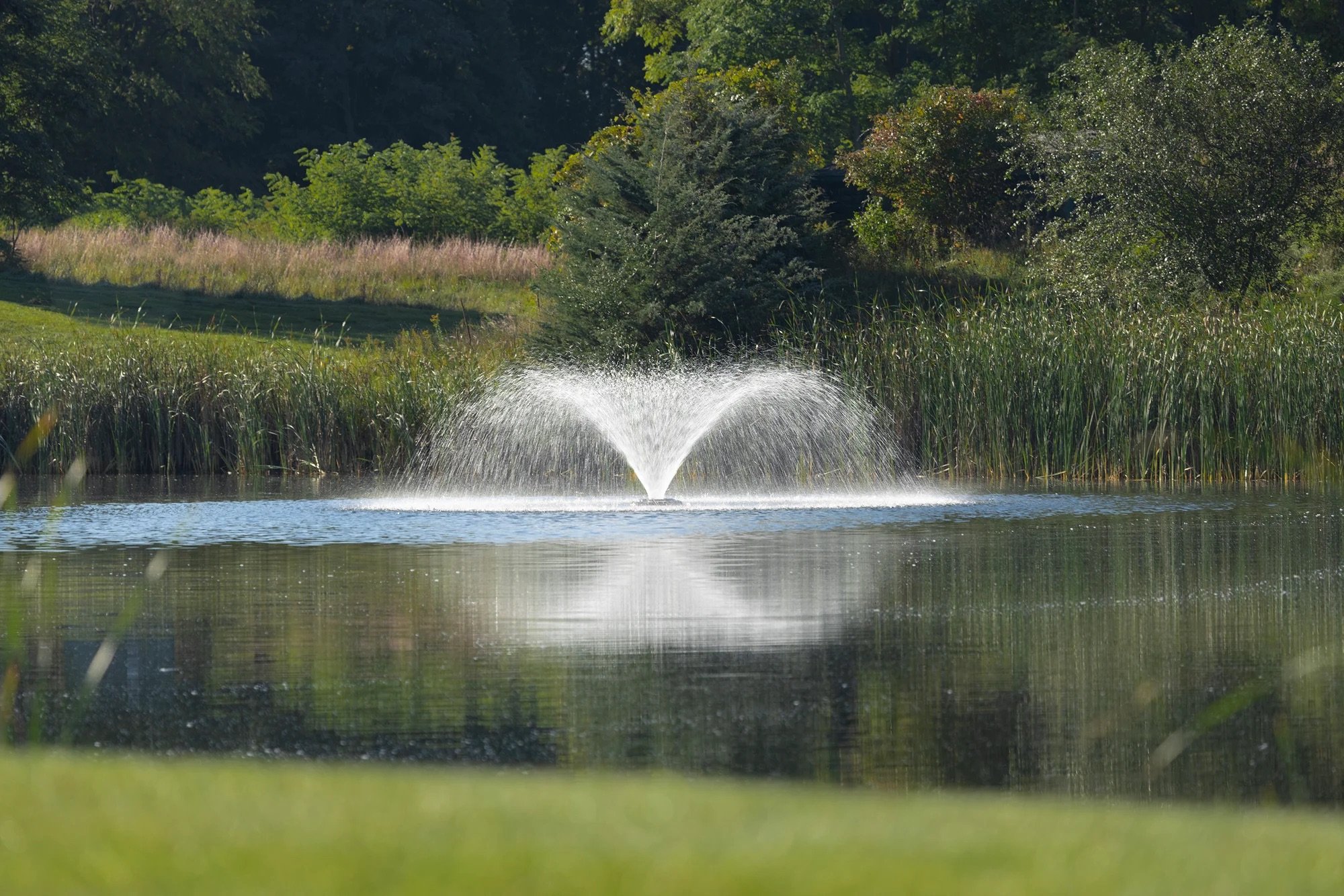
In New England’s delicate wetland ecosystems, invasive plant species like Phragmites australis, commonly called the common reed, pose a growing challenge. At Water and Wetland, we help landowners, municipalities, and conservation groups across the region manage and restore their aquatic environments through professional phragmites control and shoreline management solutions.
What Are Invasive Phragmites?
Invasive phragmites are a tall, fast-growing grass species originally introduced from Europe. While a native variety does exist, the non-native version is highly aggressive and commonly invades wetlands, stormwater systems, and lake shorelines throughout New England. Capable of growing over 15 feet tall, phragmites forms dense, impenetrable stands that outcompete native plants and dramatically alter wetland hydrology. Its rapid spread and ecological dominance make it one of the region’s most pressing aquatic plant concerns.
Why Are Phragmites a Problem in New England?
The environmental impact of invasive phragmites is significant and widespread. It spreads both by seed and through an underground network of rhizomes, enabling fast and persistent colonization. Common problems include:
- Displacement of native wetland species
- Loss of habitat for birds, amphibians, and aquatic life
- Blocked drainage ditches, culverts, and water channels
- Increased wildfire risk due to dry, dead stalk buildup
For landowners and conservationists, these impacts require prompt and strategic phragmites removal to protect the long-term health of their wetlands and waterbodies.
How to Manage Invasive Phragmites in Wetlands
Successful phragmites control in New England requires a long-term, integrated management plan. At Water and Wetland, we use science-based techniques to treat infestations and restore native habitat.
- Herbicide Application
Selective herbicide application is a foundational method for controlling phragmites. The optimal time for treatment is late summer through early fall, when the plant is sending nutrients—and herbicide—down to its root system. Our licensed specialists use aquatic-approved products and apply them responsibly to minimize impacts on native species and nearby water resources. - Mechanical Removal
Cutting or mowing the dead biomass can reduce plant height and make the area more accessible for follow-up treatments. Although mechanical removal doesn’t kill the roots, it complements herbicide application and improves overall results. It also helps enhance the visual appeal of the area and speeds up decomposition of dead plant material. - Prescribed Fire
In suitable areas, prescribed burning can be used to eliminate dry stalks and clear space for native vegetation to return. This technique is especially helpful after a herbicide application and should only be carried out under safe, permitted conditions by experienced professionals. - Water Level Adjustment
In certain wetlands and impoundments, raising water levels to submerge phragmites can stress the plant and support other control methods. When feasible, water level management can be a useful piece of an integrated approach.
When Should You Treat Phragmites in New England?
Timing is crucial for effective phragmites treatment. In New England, the ideal window typically spans from August through early October. During this period, the plant’s energy is focused on transporting nutrients to the roots in preparation for winter dormancy, making it the best time for herbicide to reach and damage the underground rhizomes. Treating earlier in the growing season can suppress growth temporarily, but won’t eliminate the plant. For long-term success, treatment should be followed by monitoring and repeat applications if needed.
Best Practices for Long-Term Phragmites Control
A successful phragmites management plan in New England wetlands should include:
- Survey and Assessment: Map the infestation to target high-priority areas
- Combined Treatments: Use herbicide, mechanical removal, and fire where appropriate
- Follow-Up Monitoring: Evaluate results and address regrowth promptly
- Habitat Restoration: Replant native wetland species to rebuild biodiversity
Because phragmites can persist even after initial treatments, multi-year strategies are often needed for complete control.
Partner with Water and Wetland for Shoreline and Wetland Management
Water and Wetland has years of experience helping New England clients restore the health and function of their lakes, ponds, and marshes. Whether you're managing a conservation area, municipal wetland, or private shoreline, our team provides expert phragmites control services using safe, effective methods tailored to your property.
Conclusion
Invasive phragmites threaten the integrity of wetlands across New England, but with the right approach, they can be controlled and replaced with healthy native vegetation. Water and Wetland is here to help you protect your shoreline, support native species, and restore the natural beauty of your property.
Contact Water and Wetland today to learn more about our phragmites management services or to schedule a consultation.
About Water & Wetland, A Jones Lake Management Partner
Water & Wetland is a trusted expert in lake, pond, and wetland management, providing innovative and environmentally responsible solutions to control invasive species, restore shorelines, and improve water quality. As a Jones Lake Management Partner, we serve HOAs, golf courses, municipalities, and private landowners with customized lake and pond management plans designed to promote long-term ecological health. We understand the importance of proper permitting and regulatory compliance, ensuring that all projects meet local, state, and federal environmental standards. With a commitment to sustainability and science-based practices, Water & Wetland helps clients maintain thriving, well-balanced waterbodies.
